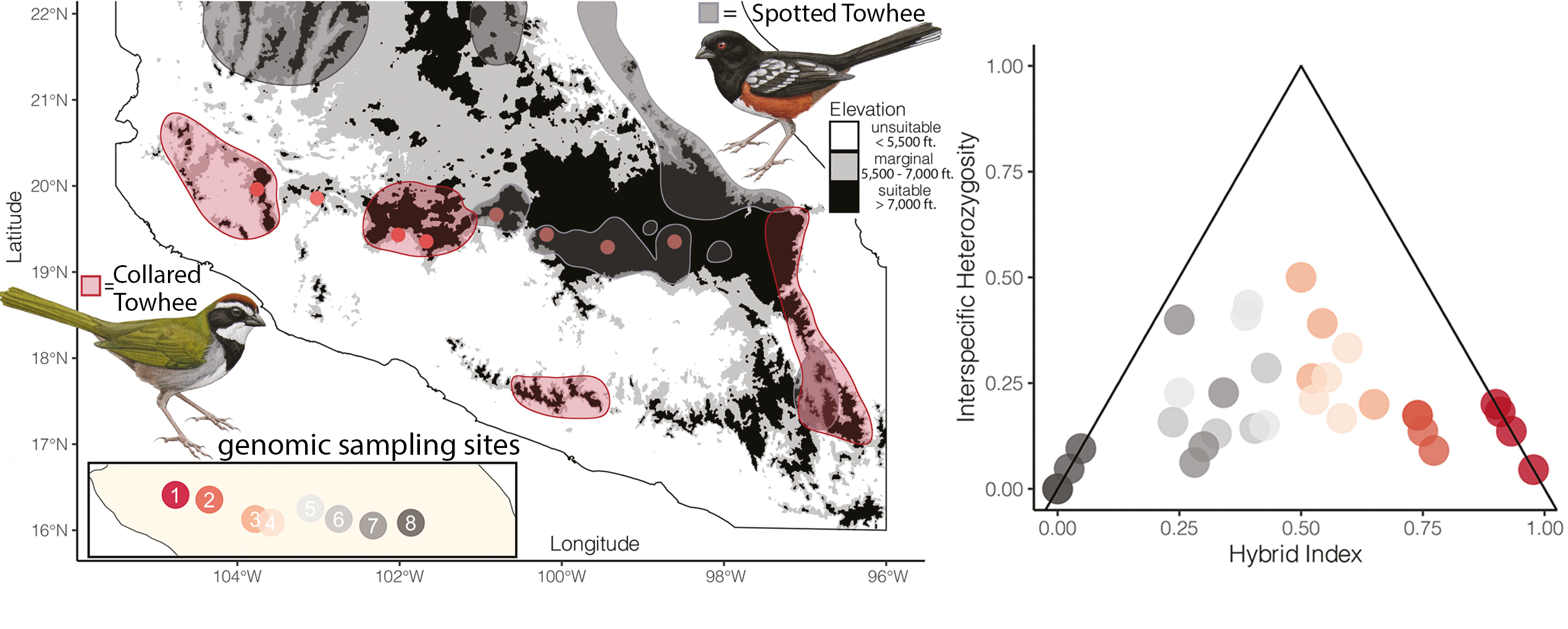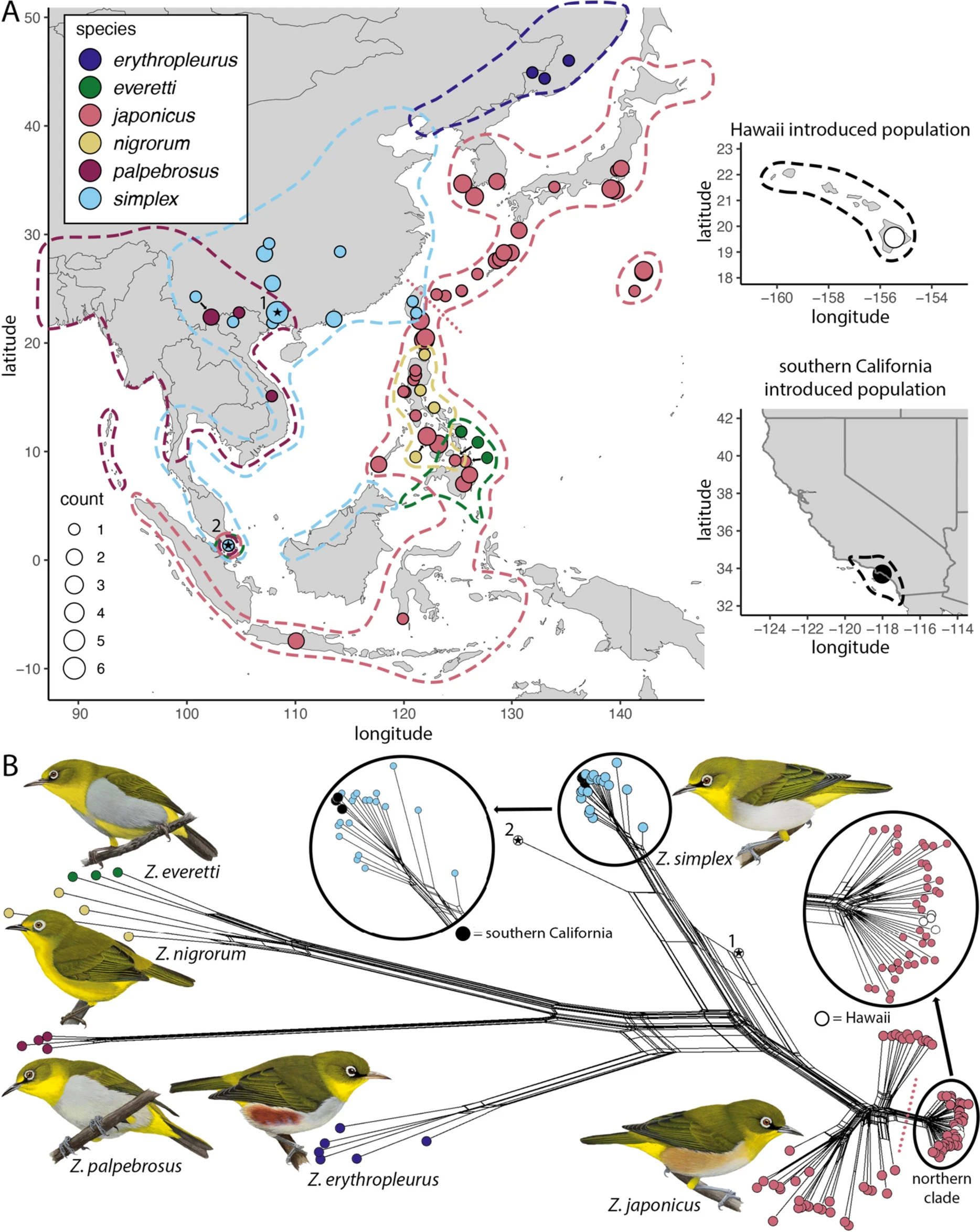Research
My research program is focused on understanding the speciation process from start to finish. To do this, I leverage natural experimental frameworks that allow me to study every aspect of the speciation process, beginning with how new species are formed and ending with how and why certain species go extinct. The three main types of natural experiments I study are islands, hybrid zones, and human-mediated translocations. Many of my projects even encompass more than one of these types of natural experimental frameworks!

Island populations
Island populations provide ‘peripheral isolates’ that allow us to study the speciation process from beginning to end

Hybrid zones
Hybrid zones provide a natural experimental framework mimicking the classical crossing experiments performed by geneticists across decades

Human-mediated translocations
Human-mediated translocations allow us to observe and study the very first stage (physical isolation) of the speciation process, in real time
